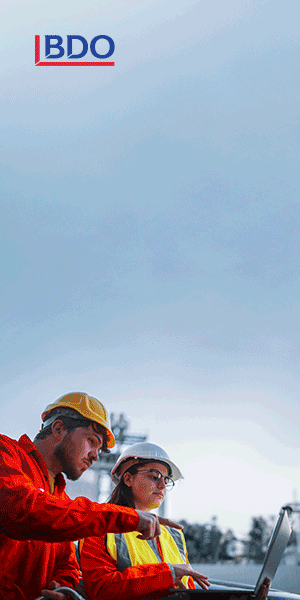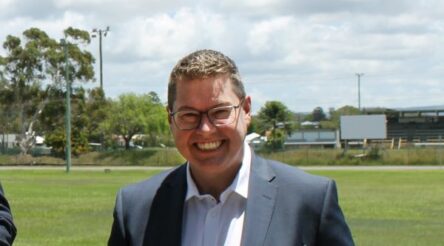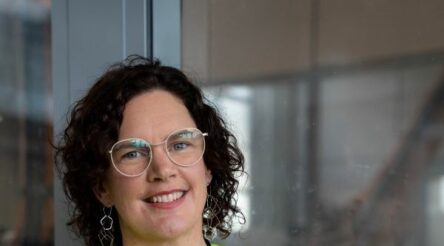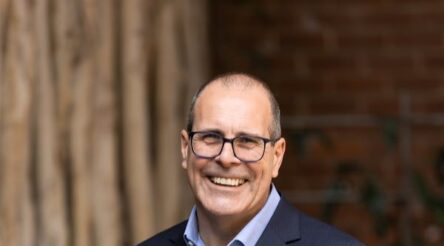Towards 3% R&D – Australia’s climate opportunity by Dr Katherine Woodthorpe

Today in our editorial series – Towards 3% R&D – Turbocharging Australia’s Innovation Effort – Katherine Woodthorpe looks at the potential of innovation in low emission products for export. She argues investing in innovation and STEM skills has economic returns.
In the fight against climate change, Australia and the world are at a crossroads.
The threats of extreme weather, population displacement and vulnerable infrastructure call for an ambitious global push to support decarbonisation.
In a signal of renewed global leadership, Australia is proposing to host the Conference of Parties in 2026 (COP31) with Pacific Island partners.
We need Australia to set ambitious targets for research and development (R&D) to position the nation at the vanguard of global action.
The Australian Academy of Technological Sciences and Engineering (ATSE) has called for the Federal Government to commit to an ambitious target of net zero greenhouse gas emissions by 2035.
This will signal to industries, to governments and to all Australian sectors that the time is now to deploy and develop low-carbon technologies throughout our society.
By leading in the development and rollout of such exports, we can support the rest of the world to decarbonise alongside us.
For Australia, the climate challenge is full of opportunities. Our plentiful renewable energy resources, educated population and R&D leadership are the advantage we have to leverage in order to become an innovation nation.
Taking advantage of the opportunity in front of us will require first and foremost an investment in our people. The Government should urgently prioritise upskilling our workforce.
As our energy infrastructure transitions to renewable, distributed sources around the country, so must our energy-intensive jobs – Australia can support workers in energy, minerals, construction, transport and agriculture to take on the clean methods of the future.
The earlier we can invest in equitable education and our future capability, the better equipped we will be to embrace the post-carbon world.
@AuManufacturing will publish contributions from readers for our series – Towards 3% R&D – turbocharging our national innovation effort – for the next month and in an e-Book, and we urge you to contribute. Call Peter Roberts, 0419 140679 or write to [email protected].
The recently released Universities Accord review makes clear the enormous potential to come from giving more people from more backgrounds access to high-quality education.
Alongside the climate challenges we face are the chances of a better world that we can help to build.
Rural and regional communities are at the frontline of our biggest scientific, technical and engineering challenges.
They are central to sourcing the resources we need, building distributed renewable energy systems, constructing climate-ready transport and infrastructure, managing precious water resources and producing the nation’s food.
These communities can thrive in response to these challenges, but only if we train and retrain our people for the clean energy jobs of the future, powered by engineering, science and technology.
Global pressures mean that now, more than ever, Australia needs to invest in building a diversified economy.
Our economic complexity is falling. Productivity growth is stagnant. We currently spend 1.68% of our GDP on R&D, a significant drop from the peak in the 1980s.
For example, Australian renewable pioneers VAST Solar, who have been building concentrated solar power technologies in Port Augusta in South Australia, are taking its expertise offshore supported by venture capital funding overseas.
The economic return from R&D
But we have a solution to hand. We know that every dollar spent on R&D returns $3.50 to the economy.
Increasing this by around $2 billion per year for the next decade would bring it closer to our international peers around 3% of GDP.
The injection of discovery, creativity and employment opportunities this would provide can’t be ignored.
If we are to decarbonise the economy and deploy renewable technologies at scale, this is how it will happen.
The raw materials of the batteries powering our transport could be refined and made into products here.
We could export our renewable energy embedded in green hydrogen, ammonia or steel.
Meeting a net zero by 2035 target will not be easy, but it is achievable.
With immediate large-scale investment in both skills and infrastructure, and regulatory support at all levels, we can rise to the challenge. We can meet our international commitments from the Paris Agreement.
As one of the wealthiest, best educated and most renewables-rich countries in the world, we can maximise the benefits of the global transition to net zero.
Australia can become a global force for good in driving ambitious climate action and innovation.
It can become a renewable energy exporter, a developer of climate solutions and a regional leader in supporting our people and our industries to thrive in a low-carbon world.
Dr Katherine Woodthorpe AO FTSE FAICD is one of Australia’s most influential people in innovation. She is also a Fellow of the Australian Institute of Company Directors and has been a Fellow of ATSE since 2015. In 2017, she received an Order of Australia for her ongoing service to research and technology innovation in Australia. Dr. Woodthorpe is the 10th President of the Australian Academy of Technological Sciences and Engineering.
This series is brought to you through the support of our principal sponsor, public accounting, tax, consulting and business advisory BDO, and R&D tax incentive consultancy Michael Johnson Associates.
Further reading:
Towards 3% R&D – Boosting industry and research collaboration, by Dr Tony Peacock
Towards 3% R&D – The Statistics Do Not Lie By Dr John Howard
Towards 3% R&D – the role of industry policy by Roy Green
Towards 3% R&D – continuous improvement in manufacturing by Serena Ross
Towards 3% R&D – Tax incentive is alive and kicking by Kris Gale
Picture: Dr Katherine Woodthorpe
Topics Analysis and Commentary ATSE Australian Academy of Technological Sciences and Engineering Australian Institute of Company Directors decarbonisation Dr Katherine Woodthorpe energy generation innovation Manufacturing News Productivity Comission R&D towardsthreepercent Universities Accord Vast solar Videos
@aumanufacturing Sections
Analysis and Commentary Awards Defence Manufacturing News Podcast Technology Videos











